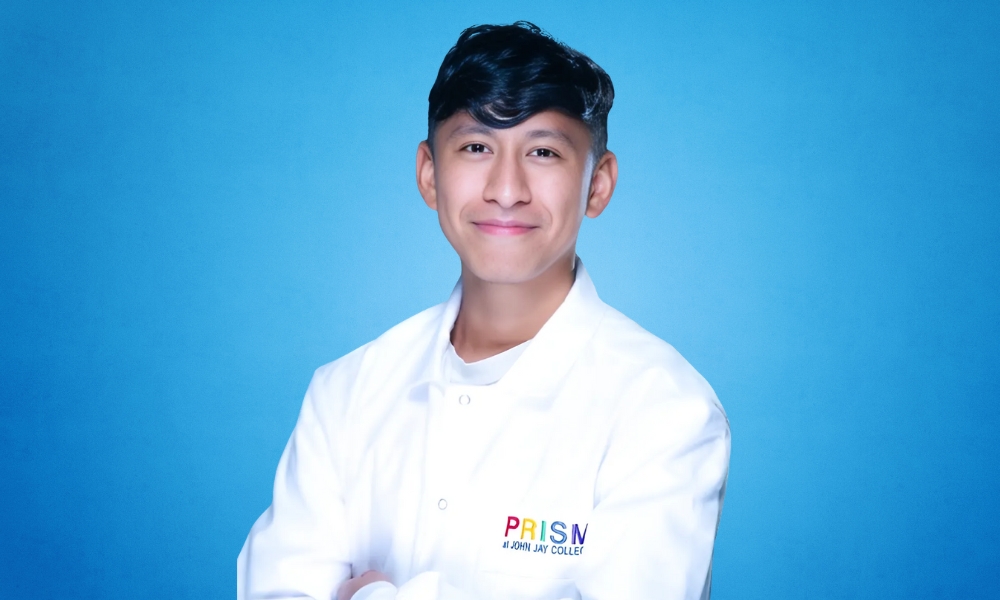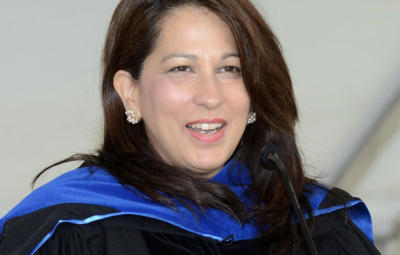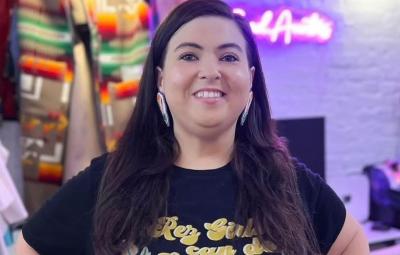
Major: B.S./M.S. in Forensic Science
Mentors: Elise Champeil, Ph.D., Peter Diaczuk, Ph.D.
Programs: PRISM, Forensic Science Peer Mentor
Internships: Elise Champeil, Ph.D. and Peter Diaczuk, Ph.D.
Hometown: Brooklyn, NY
Career Aspiration: Forensic Scientist at New York City Office of Chief Medical Examiner
What was life like before John Jay?
Both my parents immigrated from Puebla, Mexico. They came to this country to give their children a better chance at having successful lives. I’m the youngest and was born and raised in Brooklyn. Living in a Mexican household, I grew up proudly embracing my Mexican heritage and holding on to its rich traditions—speaking the Spanish language, having a deep appreciation for the music and culture, celebrating festivities like the Day of the Dead, and playing soccer. I also grew up having two great role models in my sisters. They both graduated college and are working professionals. They’ve paved the way for me in many ways.
What sparked your passion for forensic science?
I grew up watching true crime shows and the series The Flash, which had a forensic scientist/superhero as its main character. In high school, my passion for science deepened. I was part of the medical science program and took a forensic science course where I learned how forensic scientists can help people. As someone who loves providing solutions, knowing that forensic scientists can tell the story of evidence, provide answers during an investigation, and give a victim’s family closure was something that really drew me to the field.
Why John Jay?
When searching for colleges, I knew I wanted to go to a place where forensic science was strongly represented and its faculty was at the forefront of the field. John Jay is known for its prestigious forensic science program, its exceptional faculty, and justice-focused education, so the college was my top choice.
How has PRISM enhanced your John Jay experience and supported your career goals?
PRISM has made me feel like a scientist and strengthened my goal of becoming a forensic scientist. As a Latino, growing up, I didn’t see many scientists who looked like me, but that all changed for me at John Jay. Some of the first science professors I had, Professor Owen Zacarias ’18 and Professor Anayatzinc Vargas, are of Latino descent. Seeing them be successful in their careers let me know that I, a Mexican American kid from Brooklyn, could also excel in forensic science.
As a PRISM student, I also work with extraordinary professors in a lab setting and gain real hands-on experience in the research process. The PRISM community feels like a big, supportive family. I got straight A’s in all my science classes after being part of the PRISM student study groups. We’re a small collaborative community that bounces ideas off each other and pushes each other to work toward achieving our goals.
Can you tell us about your mentors and the research you’re doing with them?
Professor Champeil has been a great mentor who introduced me to organic chemistry and toxicology research. During my research with her, we worked on the synthesis and characterization of DNA interstrand crosslinks formed by mitomycin (drugs used in chemotherapy). Essentially, we’re studying which types of cancer drugs are more effective in attaching to the DNA and attacking cancer cells. Throughout the process, Professor Champeil answered my questions, checked in regularly to see how the research was going, and reassured me that I was on the right path. I learned so much through the experience and see myself applying many of the skills I learned from her in my future work.
This semester, as part of my work in the forensic science master’s program, I’ll be working with Professor Diaczuck to assess the impact of less lethal bean bag ammunition. These sturdy fabrics filled with lead pellets are often used to control a situation without using deadly force. However, bean bag ammunition can have detrimental, long-lasting effects and cause bodily harm. We’ll be exploring this type of ammunition by using fake bodies and measuring how different distances and types of shotguns change the impact forcefulness. The hope is to guide law enforcement by giving them an understanding of the best and safest way to use this type of ammunition.
Where do you see yourself in 10 years?
In 10 years, I hope to have years of experience under my belt, including working in the NYPD crime lab once I earn my master’s degree. I aim to work my way up to be a forensic scientist at the NYC Office of the Chief Medical Examiner. Ultimately, I want to provide solutions and bring justice to victims and their families. I see myself using my skills in forensic science and ballistics to make a real difference in people’s lives.



